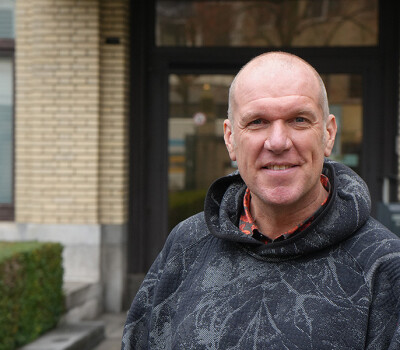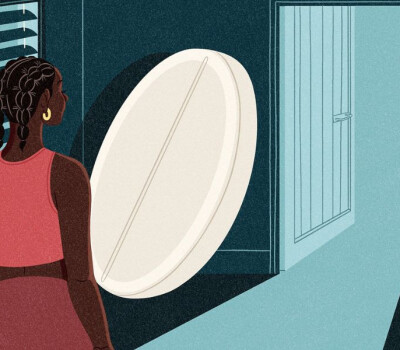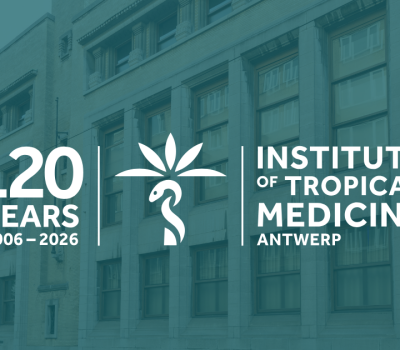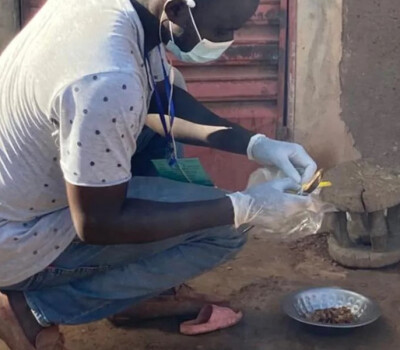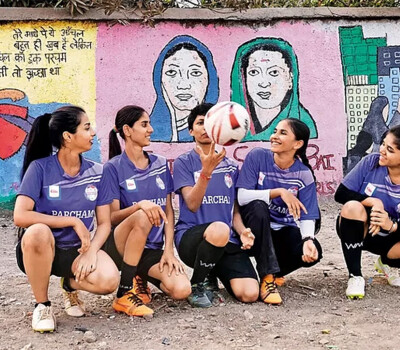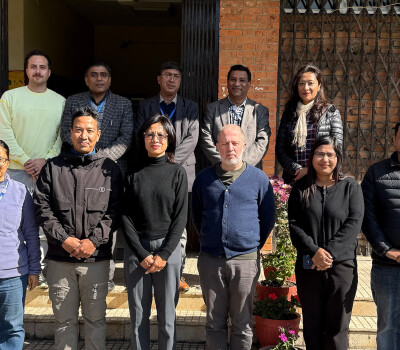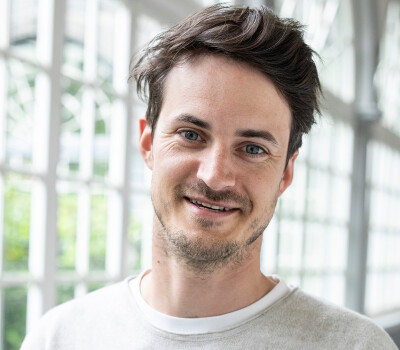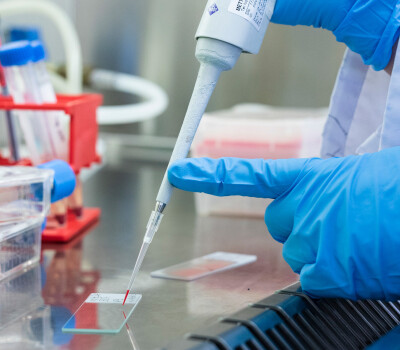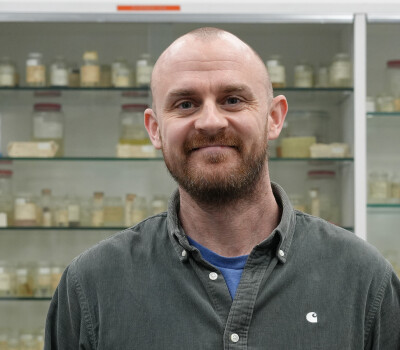A small factory within ITM


Unbeknownst to many, the Institute of Tropical Medicine in Antwerp houses a tiny “factory” which produces millions of tests every year for the screening and diagnosis of some of most neglected infectious diseases around the world. Some of these diseases, such as sleeping sickness or visceral leishmaniasis, can affect humans. Others however, such as surra, occur in vertebrate animals like horses, donkeys, cattle, camels, llamas, dogs, and cats.
Early detection is key to combat these diseases. In the late 1970s, ITM developed the Card Agglutination Test for Trypanosomiasis (CATT), which became one of the most widely used field tests to detect sleeping sickness on a large scale in West and Central Africa. To this day, ITM still develops it in-house. However, this is only one of several tests produced by ITM’s “test kit factory”.
We spoke to Caroline Rombouts, head of the Applied Technology and Production Unit, about the importance of their work and a recent milestone in their test sales.

Could you tell us more about the diagnostic tests?
CAROLINE Our unit produces in-vitro diagnostic tests (IVD) for sleeping sickness, visceral leishmaniasis, and surra. We produce most of the CATT tests for sleeping sickness, reaching a peak of about two million per year. Since the production process is laborious and not commercially viable, the pharmaceutical sector has had little interest in manufacturing the test, without which elimination of the disease will not be possible. We are the only organisation in the world which manufactures it. The majority of these CATT tests is sold and shipped to other countries, such as the Democratic Republic of the Congo (DRC), South Sudan and the Central African Republic. We also produce over a 100,000 “DAT tests” every year; those are used for the diagnosis of leishmaniasis. Lastly, we produce tests for surra which we sell to veterinary hospitals around the world. In 2022, there were about 120,000 of them.
Of course, ITM does a lot more than merely producing test kits: we closely work together with the Trypanosoma Unit, headed by Jakke Van Den Abbeele, and Nick Van Reet, expert in surra diagnosis. The Trypanosoma Unit is an official Reference Laboratory for surra of the World Organisation for Animal Health (WOAH). We receive hundreds of blood samples every year, which veterinarians send to ITM for diagnosis. They are mostly samples of dogs, but also horses, which need a surra certificate for international travel.
For which diseases do we develop tests?
Sleeping sickness
Sleeping sickness, or human African trypanosomiasis, is caused through the bite of the tse tse fly. Its symptoms include fatigue, high fever, headaches, and muscle aches, and it can be fatal if left untreated. More than 80% of the cases occur in the Democratic Republic of the Congo.
Leishmaniasis
Leishmaniasis is spread by the sandfly. Its symptoms include fever, damage to the spleen and liver, and anemia. Without treatment, its most serious form, visceral leishmaniasis is generally fatal. Visceral leishmaniasis is the second-largest parasitic killer in the world after malaria.
Surra
Surra is, similarly to sleeping sickness, also caused by trypanosomes, but affects only animals. Symptoms are fever, weakness, and lethargy, which ultimately lead to weight loss and anemia. In some animals, the disease can be fatal unless treated. Some countries such as South-Africa require surra-certificates before allowing the import of live animals.

CAROLINE Going back to the CATT tests, there is another interesting detail: the so-called CATT cards, where the CATT antigen is added together with the blood samples of individuals, need to be placed into a rotator for about 5 minutes before we have a diagnosis. This rotator should be small and portable, and function when plugged into a car battery (for example during mass screenings in villages in the DRC), or when plugged into the regular 220V at the lab. Since we needed such a specific machine, we also designed it and still produce them ourselves! We are currently optimising those rotators in use.

But the tests are only just a portion of what the AT&P unit does, right?
CAROLINE Indeed! In fact, we are also responsible for the lab animals, the lab kitchen, and the cryobank. In the lab kitchen, we deliver service to the whole institute: we clean and sterilise the equipment used by all the laboratories at ITM and we prepare culture media for growing bacteria. The cryobank houses about 60,000 isolates of human and animal pathogens, which is invaluable material for use for virologists, bacteriologists, and parasitologists at ITM and elsewhere. For example, our collection of Trypanosoma and Leishmania strains is unique in size as well as diversity, but we also have a lot of HIV samples.
Apparently, you have reason to celebrate as well?
CAROLINE That's right! Since 17 August, our brand-new webshop has been online. This way, we would like to increase the visibility of our activities and facilitate interested parties finding their way to our IVD tests. The website will also serve as a channel in our search for opportunities to sell new IVD tests.

What are your future plans?
CAROLINE We have many! An important one is the implementation of the biobank, which is a physical repository of biological material. All biological material linked to the donor is recorded in the central register. That material is used for (clinical) research. This biological material can be of various origins; we handle both human and non-human body material. The samples can be requested for a specific project, such as a study, validation for an existing test, development of a new test, etc. We will not only provide to ITM staff but external applicants as well: researchers from academic and non-academic origins or from commercial and non-profit organisations.
Of course, investing in new material, digitalisation and optimising quality control processes are equally important. This allows us to be ready for implementing other future applications such as newly developed IV tests.


Caroline Rombouts
I was born and raised in Antwerp. Growing up, I was already passionate about animals and it was my dream to become a veterinarian. So it was no surprise that I would later study Veterinary Sciences, with my bachelor at the University of Antwerp and my master's at the University of Ghent. Throughout the years, my desire to contribute to society kept growing. I became increasingly keen on research and, after graduation, started a combined PhD at the Laboratory for Chemical Analysis (now Laboratory for Integrative Metabolomics) at the Faculty of Veterinary Medicine in Merelbeke and the Laboratory of Cell Biology and Histology at the Faculty of Pharmaceutical, Biomedical and Veterinary Sciences in Antwerp. I investigated how the consumption of red meat can lead to specific human diseases, particularly colon cancer. After my PhD, I started working in the pharmaceutical industry.
My story at the Institute of Tropical Medicine began in 2021, as the scientific head of the Unit of Applied Technology and Production (AT&P). I mainly oversee the production of diagnostic kits for sleeping sickness, the daily operation of the lab kitchen, and the cryobank. I resonate with the Institute's mission and values in terms of providing quality healthcare for all, including in countries with constrained resources, which makes me immensely proud to have this position.
Spread the word! Share this story on
